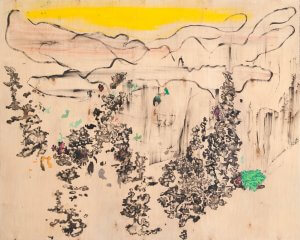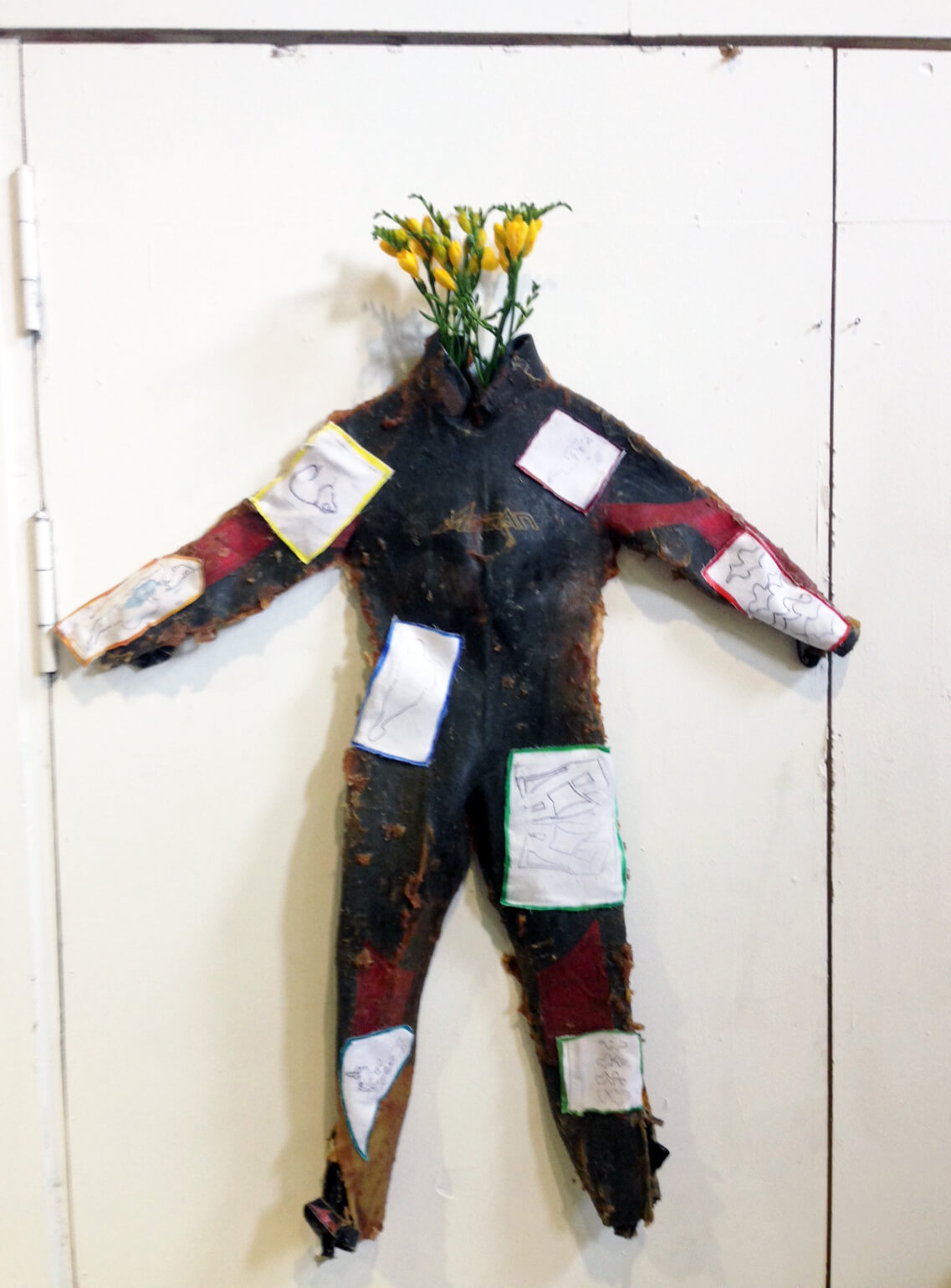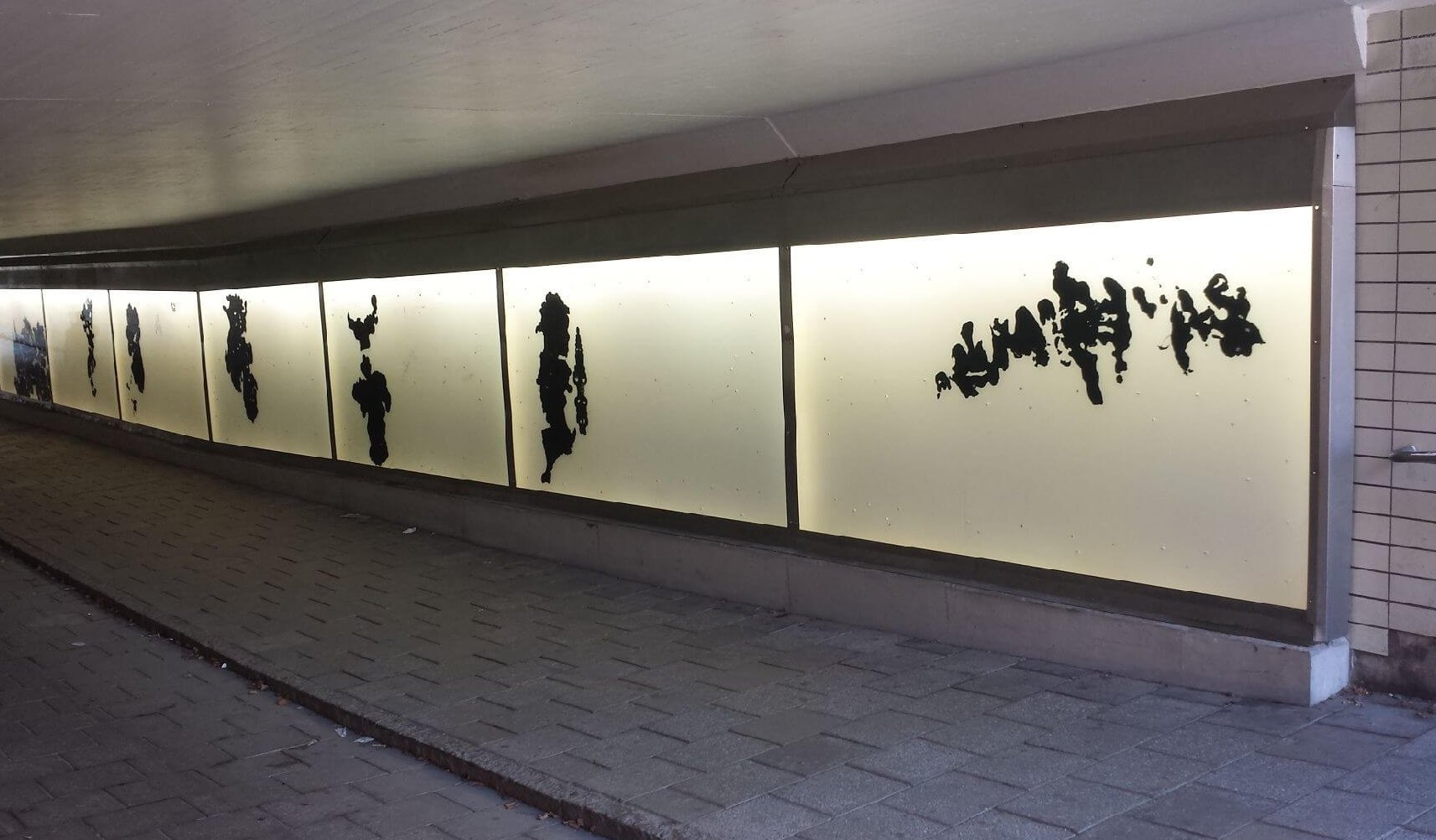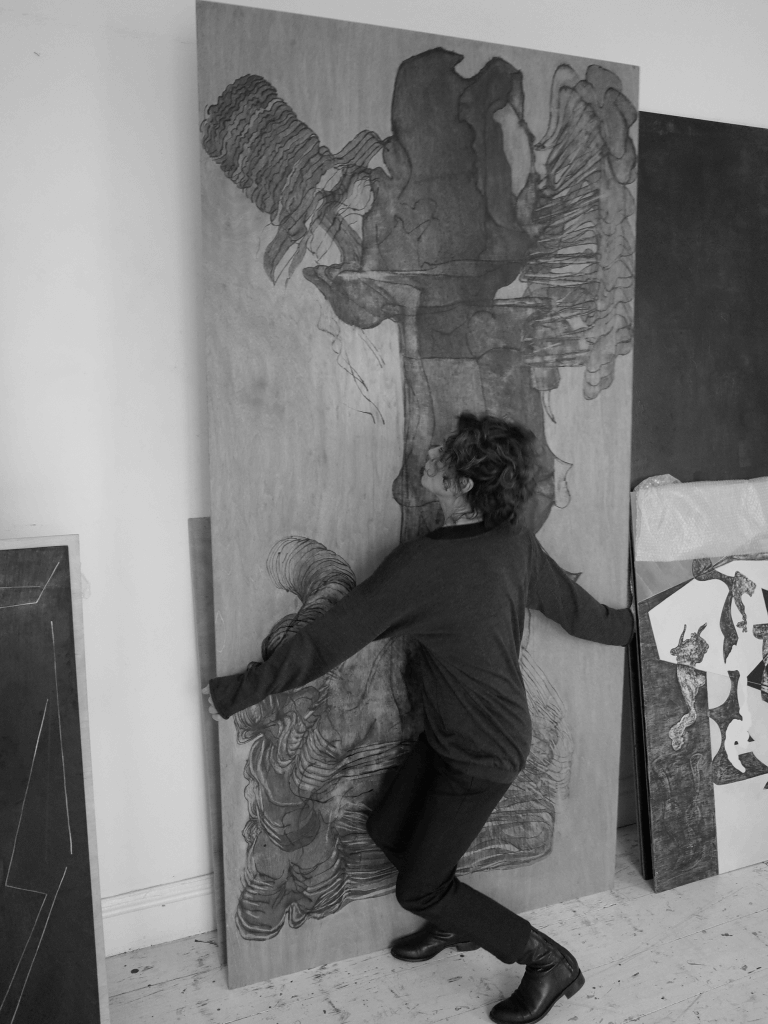
Ink and vinyl tempera on wood, 130×150 cm
SUSANN BRÄNNSTRÖM — NOTHING ELSE THAN
There is an important exclusion in the very title of Susann Brännström’s exhibition — Nothing else than. This exclusion from Nothing does not refer to the world devoid of faces, plots and subjects, this is an exclusion from the dispersed Nothing — no thing, no subject, no object, which is the place of abstract painting.
When you look at Susann Brännström’s art, you are faced with three issues. First, a search for the veracity of painting perceived as the artist’s workshop where all the superfluous but the painting itself — with its colours, shapes, and composition — is brushed aside. This veracity has become the creed of the international group of The Verus Painters, of which Susann Brännström is a member. Second, the destiny of abstract art in our time; the art that almost a century ago liberated painting from its obedience to nature. Third, art as a form of writing: from surrealism’s automatic writing to Jacque Derrida’s interpretation of painting.
«Quelqu’un vient, ce n’est pas moi, et prononce: «Je m’intéresse à l’idiome en peinture»
— Jacque Derrida, La vérité en peinture
Since the beginning of the 20th century philosophy has been dealing with art, even non-abstract art, in the wake of the most radical art revolution of 1910–1920s. Philosophers are addressing the beyond of the figurative image and re-establish the notion of mimesis. Art understood as Derridean trace of ‘absent presence’ has been retroactively conjoined with the tradition of subjectlessness in the veracity of techne itself as referring to nothing but painting itself — its colours, shapes, nothing but art itself. This breakthrough was coined by Wassily Kandinsky who once witnessed a transformation of his painting: when turned sideways, it miraculously transformed into the interplay of colours and shapes. This breakthrough makes it clear why Kazimir Malevich’s Black Square can in no way be reduced to the world of objects. In 1915 Malevich wrote:
“All past and recent painting before Suprematism (as sculpture, verbal art, music) has been subjugated by the shapes of nature, waiting to be liberated, to speak its own language, independent of reason, common sense, logic, philosophy, psychology, laws of causality, and technological changes.”
— Cubism to Suprematism, 1915
Like writing, subjectless painting lacks the idea of the extensive as the foundation of visual experience.
“As writing is “framed” it becomes an image”
— Rosalind E.Krauss, The Optical Unconscious
Though Susann Brännström rejects her adherence to any particular tradition and prefers art as it happens to some historical starting point, her works can be perceived as oscillating between abstraction and automatic writing. Her compositions, whether on paper, plywood or grounded canvas, generally look as if written on white background. Some of her paintings may remind you of traditional Chinese landscapes, surrealistic bioforms or Rorschach inkblots. However, the writing of her painting can not be deciphered for it does not refer to any particular image, whether ‘real’ or ‘cultural’. Her automatic writing has nothing to do with ‘pure psychic automatism’ or liberating spontaneity of surrealism; her painting is writing that is alienated from reality. No doubt, Susann Brännström may be perceived as part of the century-long tradition but she wouldn’t be interested in anything but painting, anything but writing that is being created here and now. “And nothing else matters”, as a Metallica song goes.
The artist states, “My intention is to dislodge previous meaning and make the contemporary possible.” This is especially manifest in her recent work where the artist brings to terms the grandest of opposing forces. This being the novel and unexpected that propels us into new territories, and the effects of painterly formalism that center a work within an established context. Recognizing the nascent potential of these opposing forces, Brännström has reached deep in to both traditional and non-traditional painting styles. Here is an art where gestural and surreal motifs blend with a raw and stripped down scraffitto impulse, at once creating works that identify and break apart both idioms.
One measure of the success of her overriding initiative is evidenced in how the artist’s work while being exhibited in both museums and galleries internationally, has at the same time been embraced by authentic street graffiti and skateboarder youth culture. Images of her work have appeared in numerous related journals and publications, where it is clearly being regarded in the context of an anarchistic graffiti art.
This is an unusual and enviable position to occupy. Especially in our contemporary art world where today’s artists see themselves in a larger cultural light than artists of the past. The allure of a certain street credibility is understandable and obviously reflections of the artists remarkable reach. Brännström has the ability to bring together all the paradoxes and ambiguities of her art into an intuitive, visual and intellectual experience that is at the very core of painting.
Download catalog PDF here.
Olesya Turkina
Dr. or critic, curator St:Petersburg, RussiaPeter Tobey
Private art dealer located in New York city. He is also the former owner of Tobey Fine Arts Gallery in New York. 1997 to 2009.















 Susann Brännström in her studio
Susann Brännström in her studio